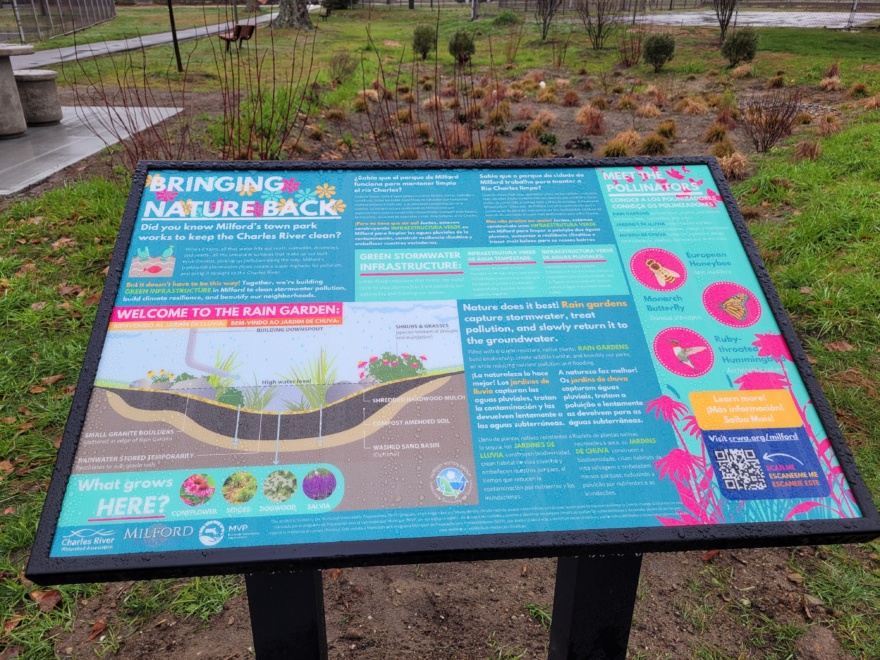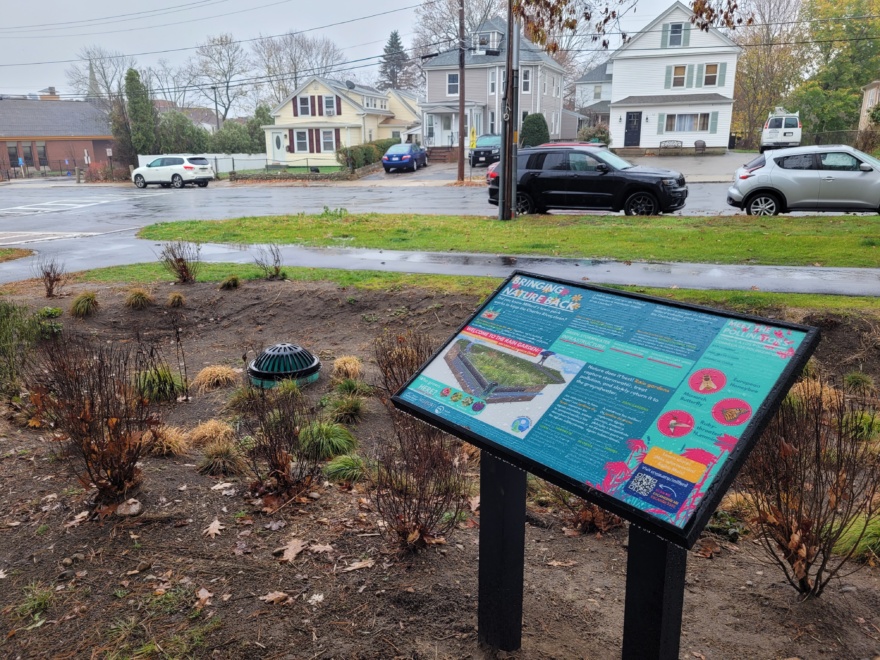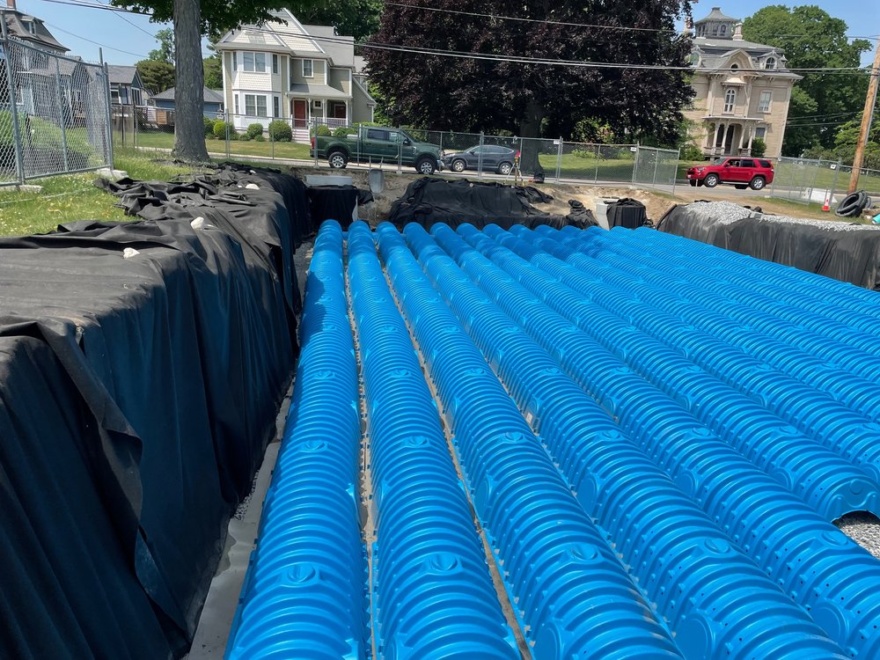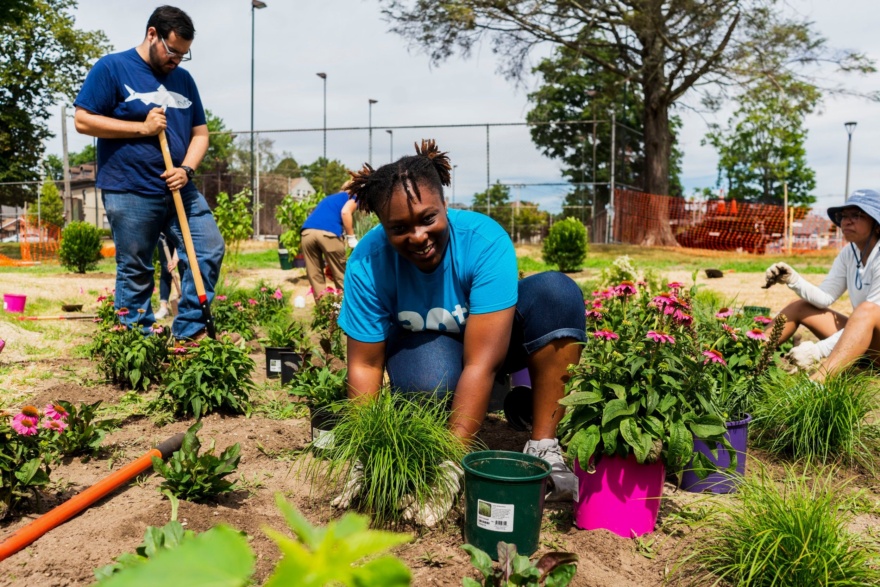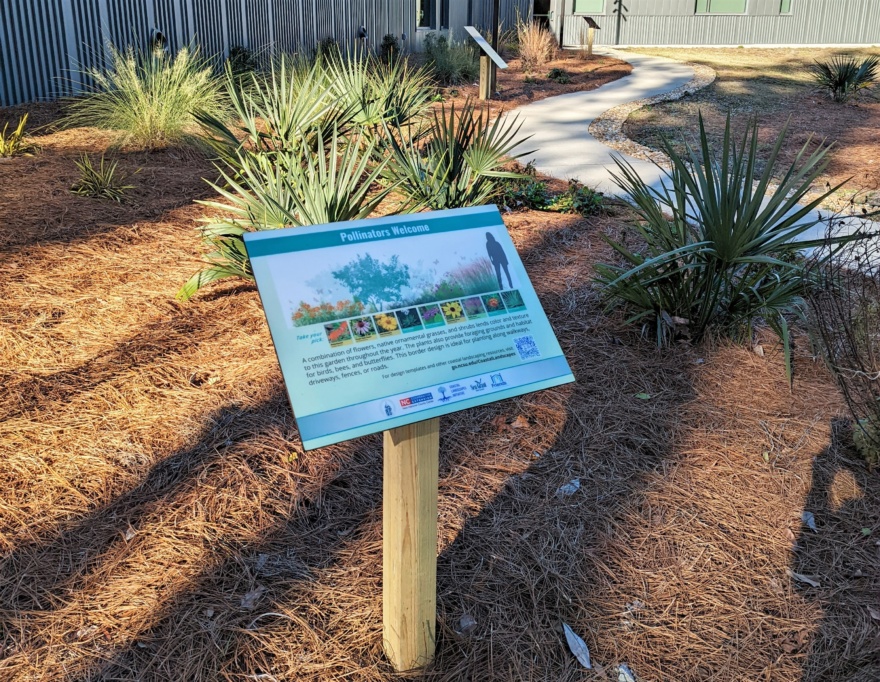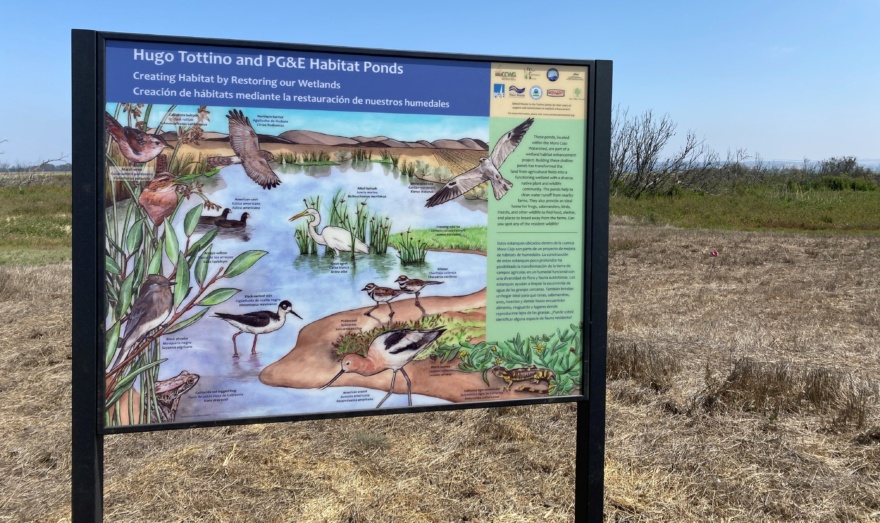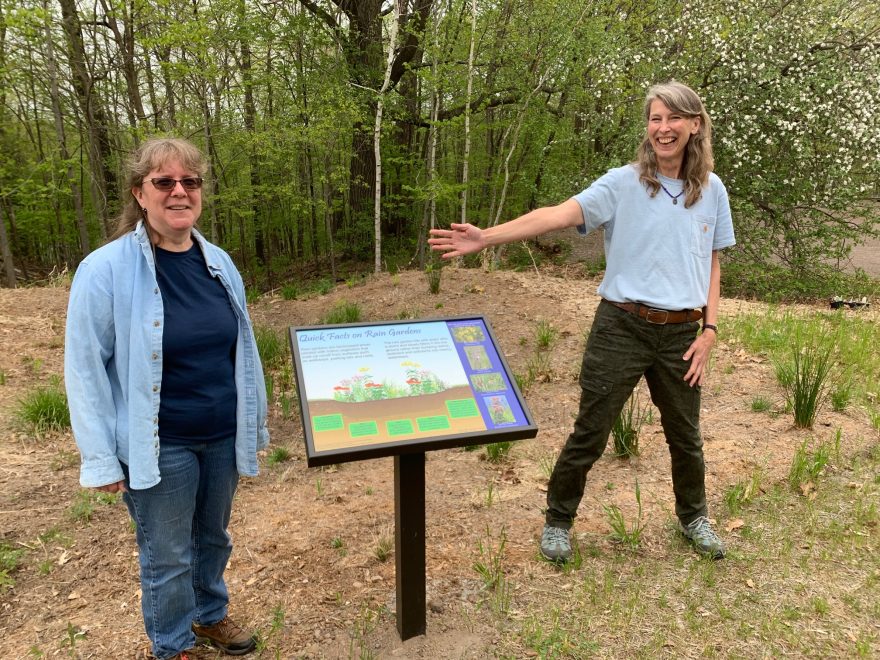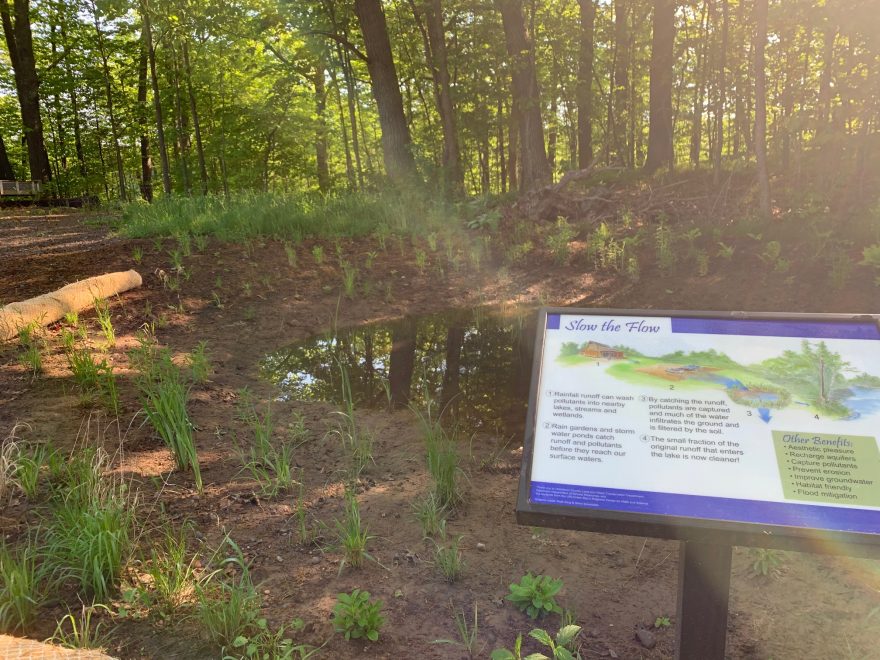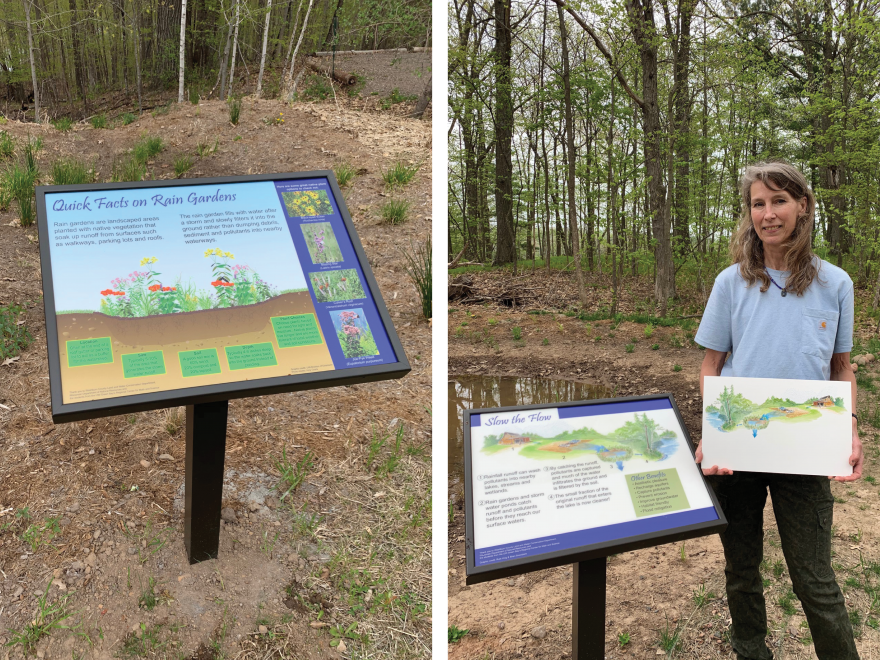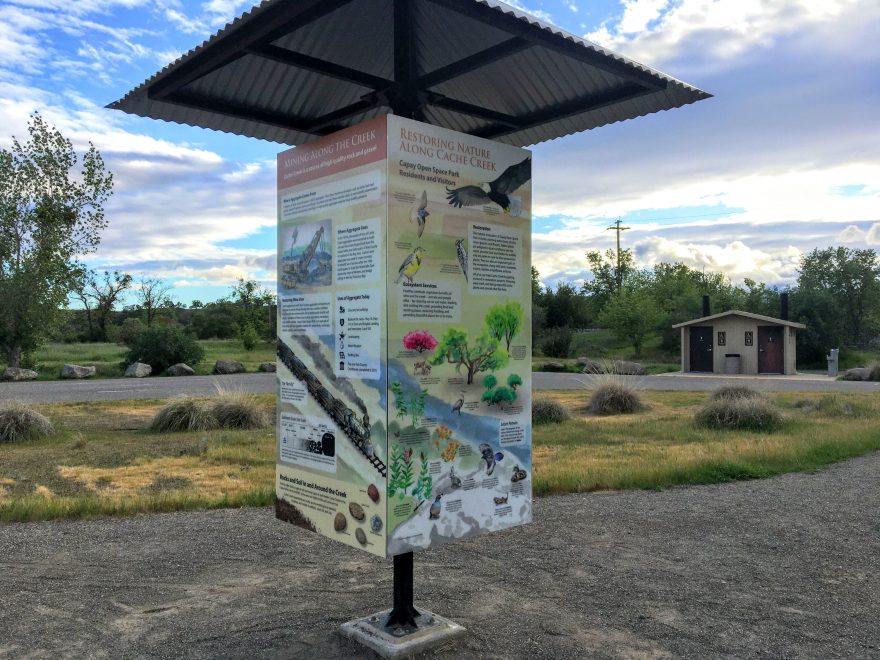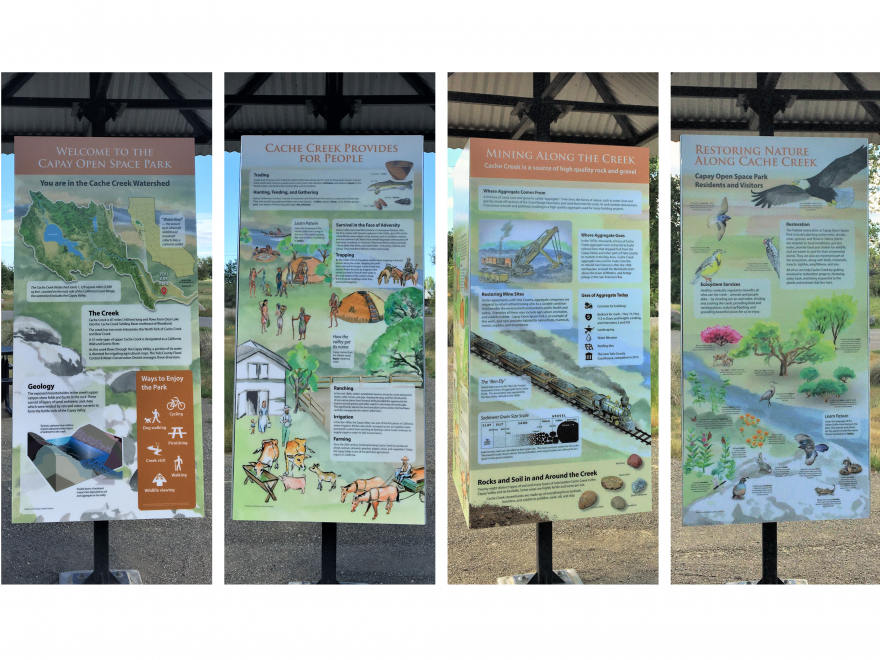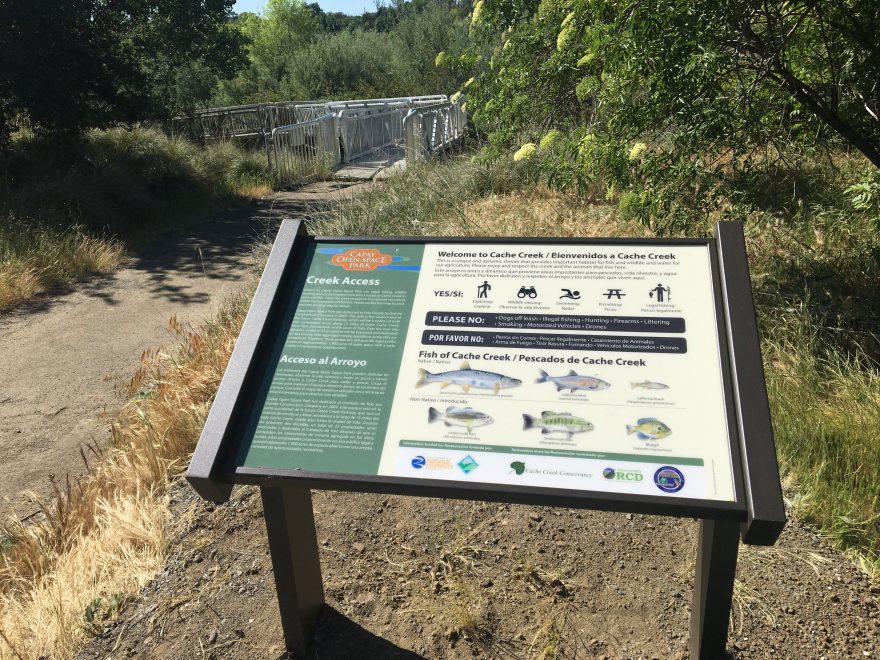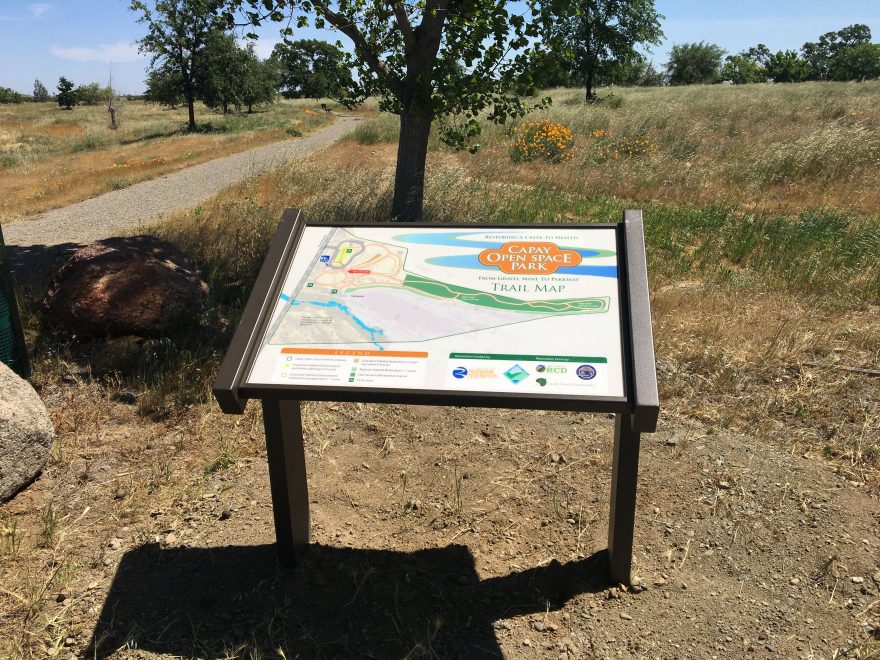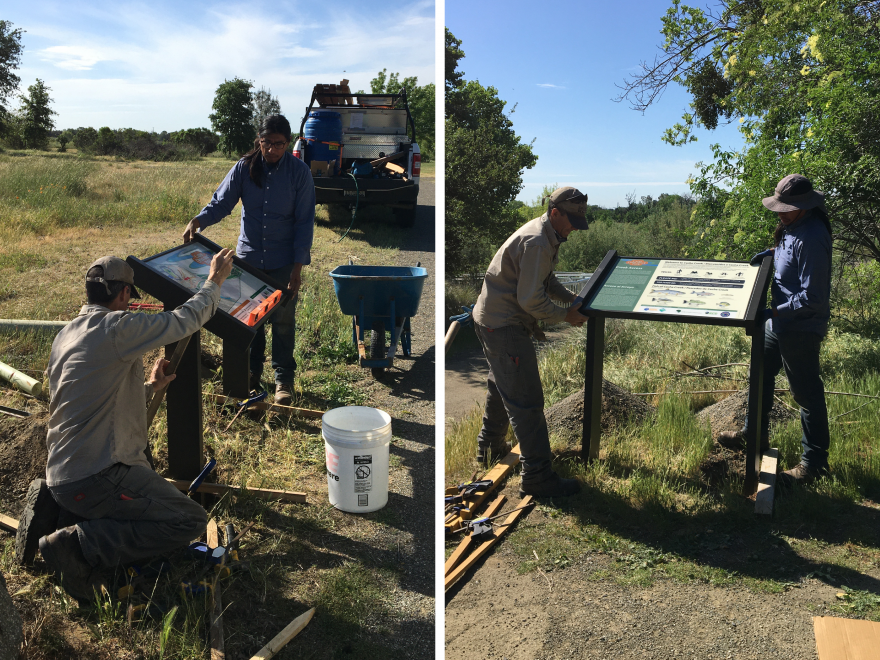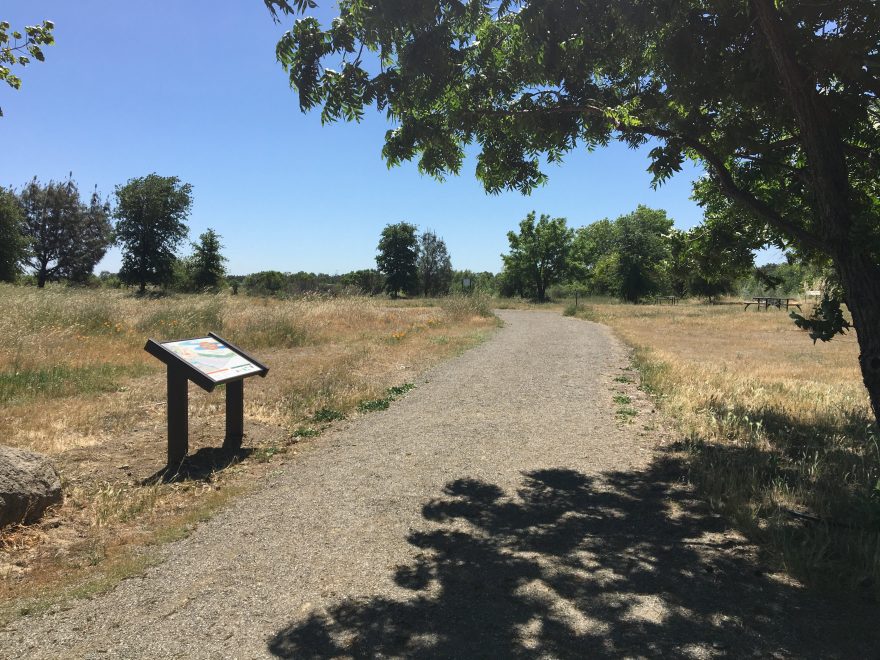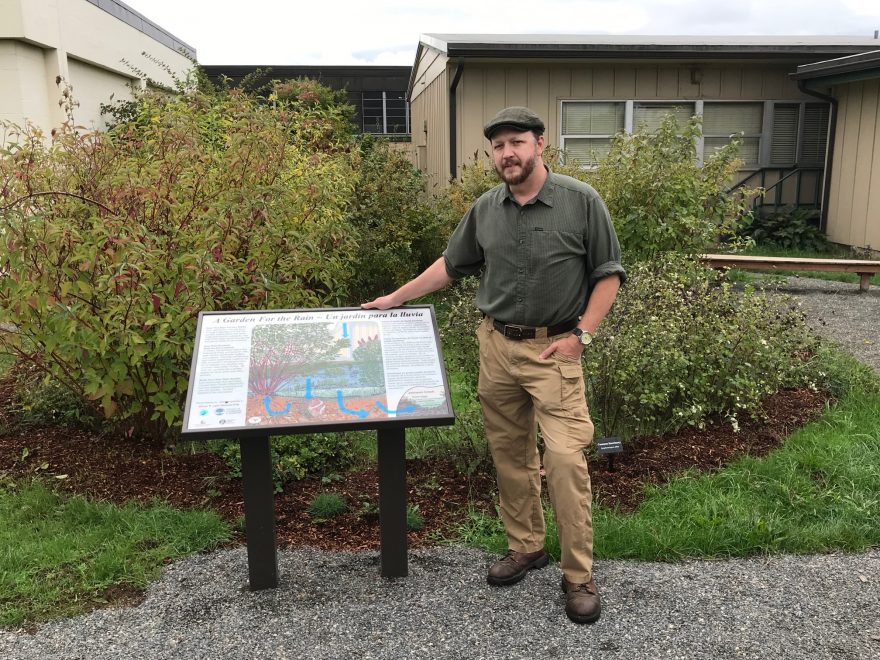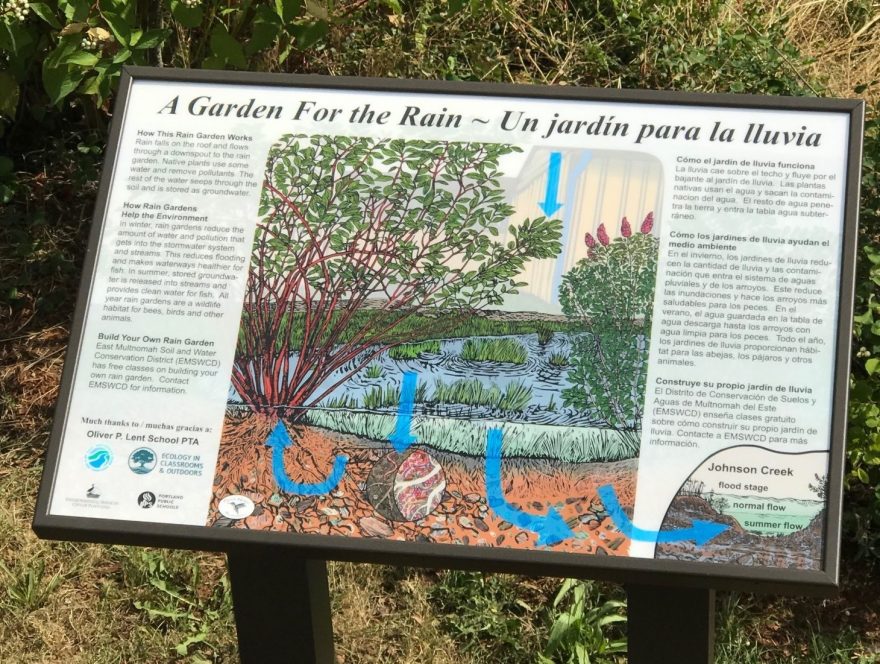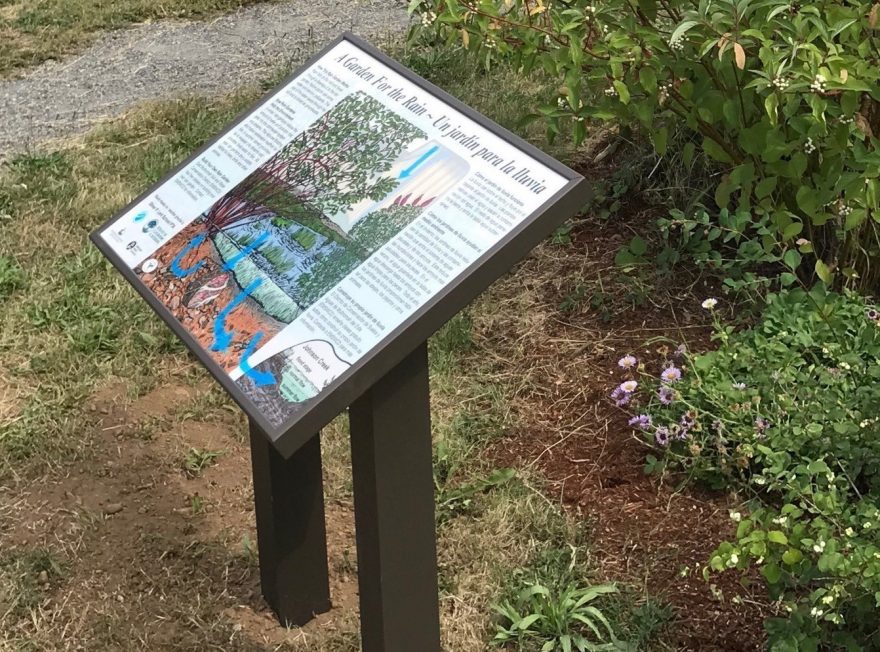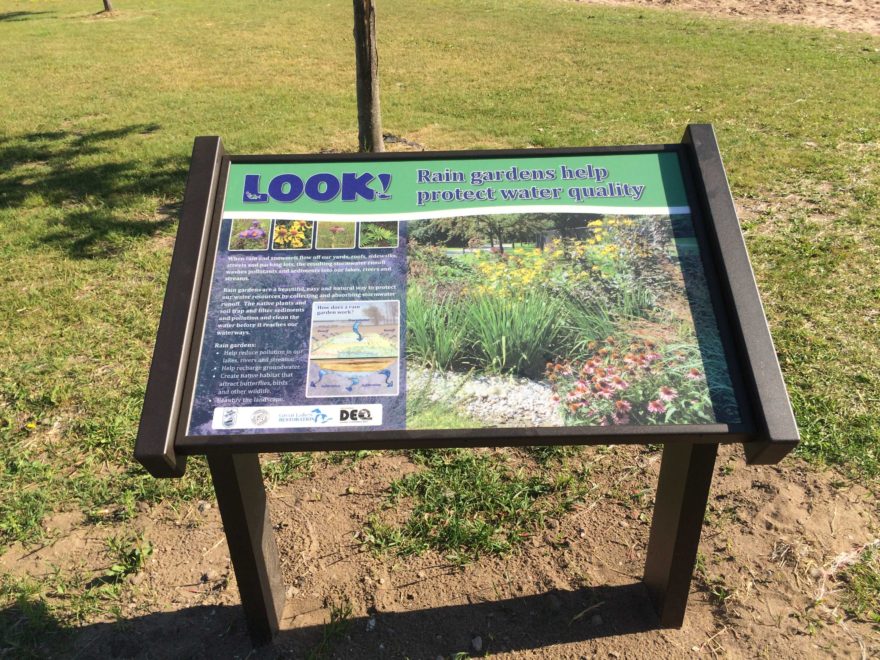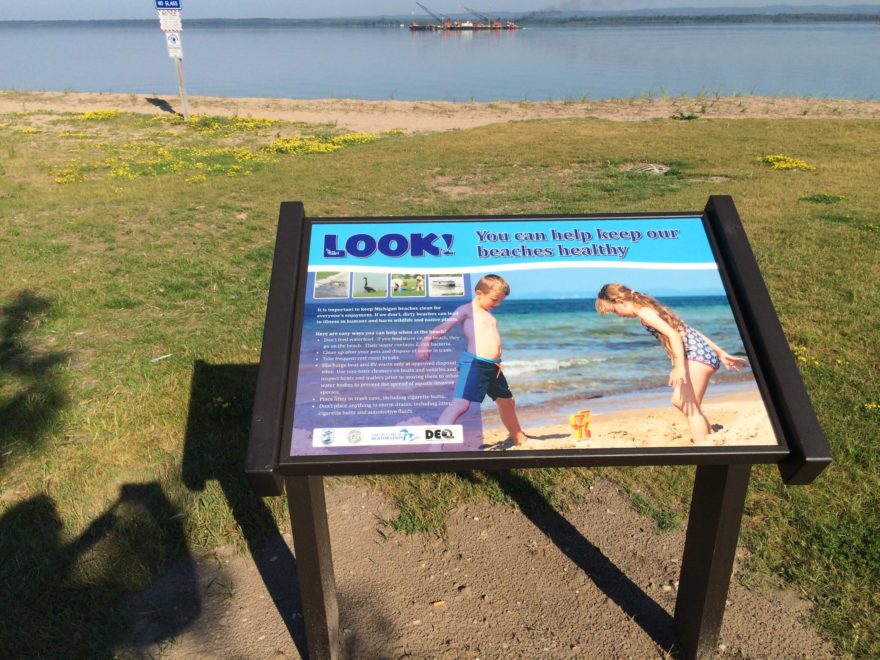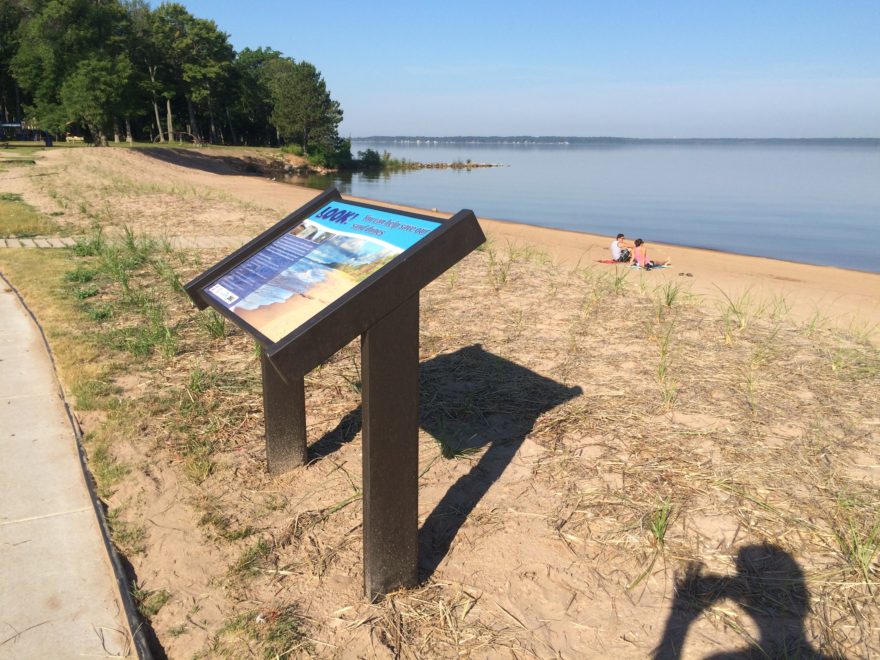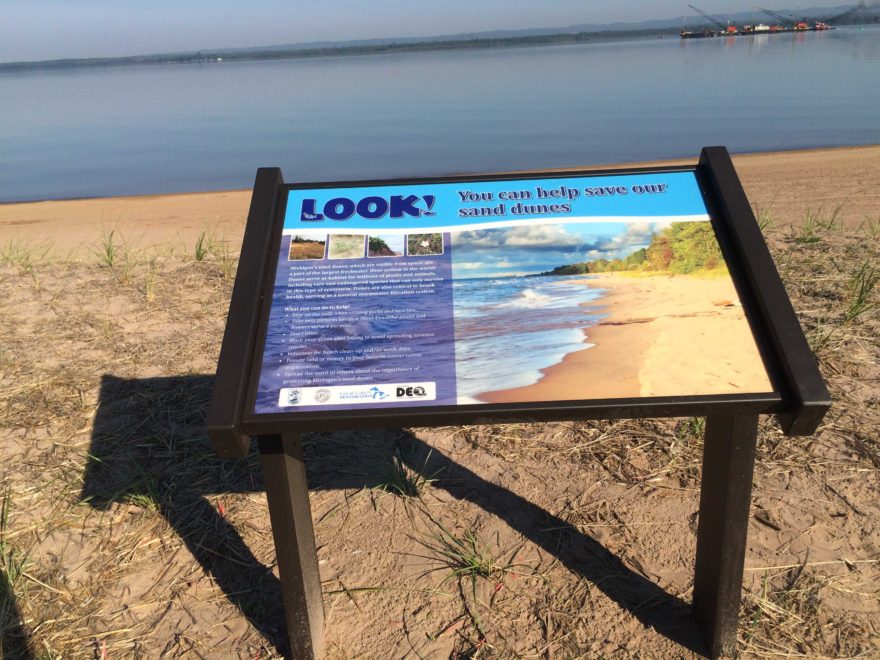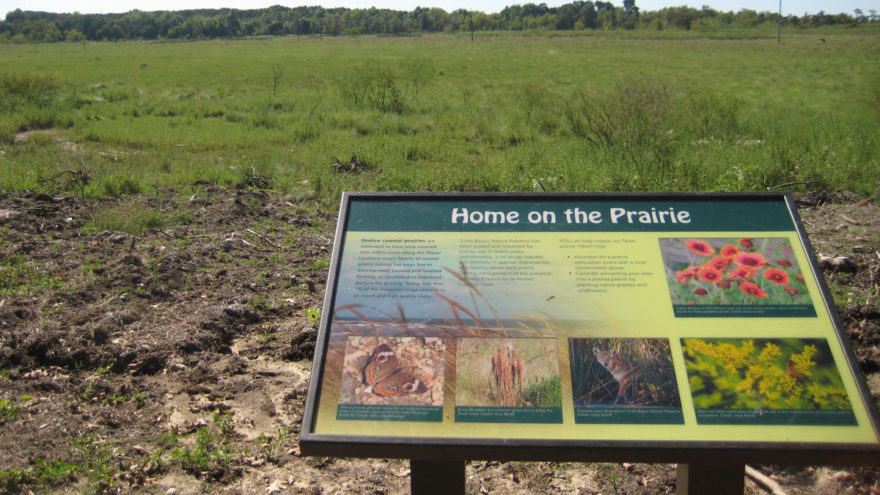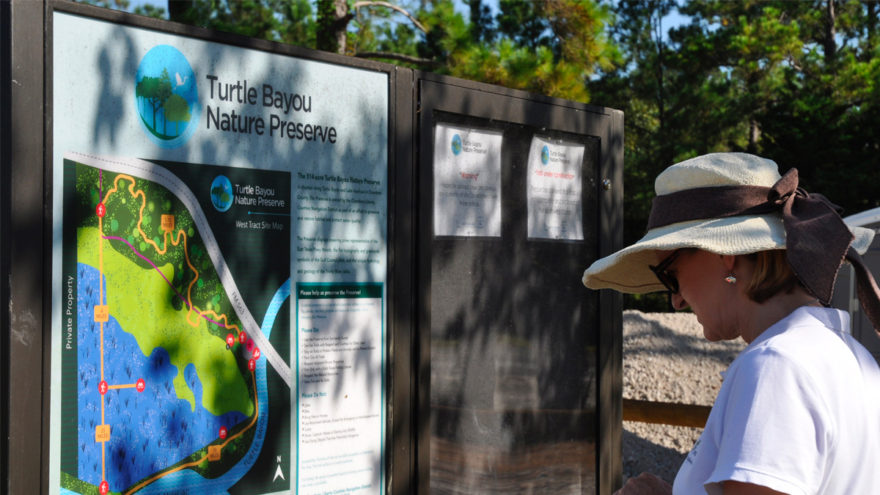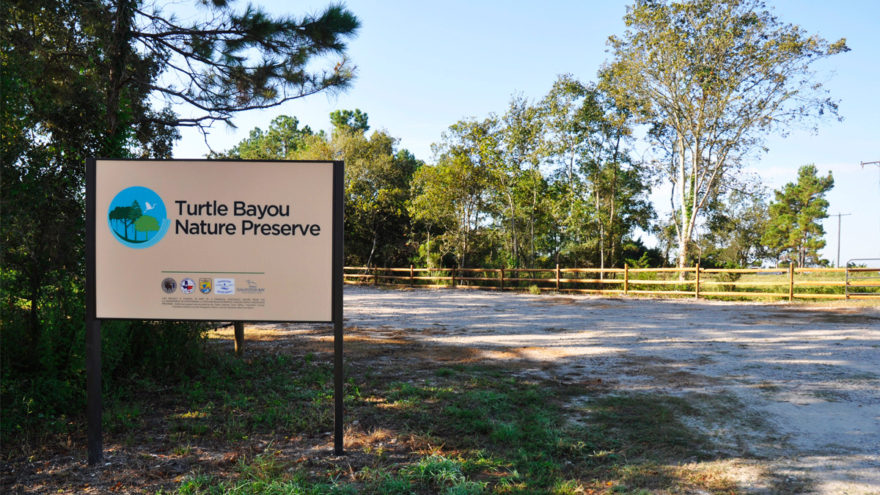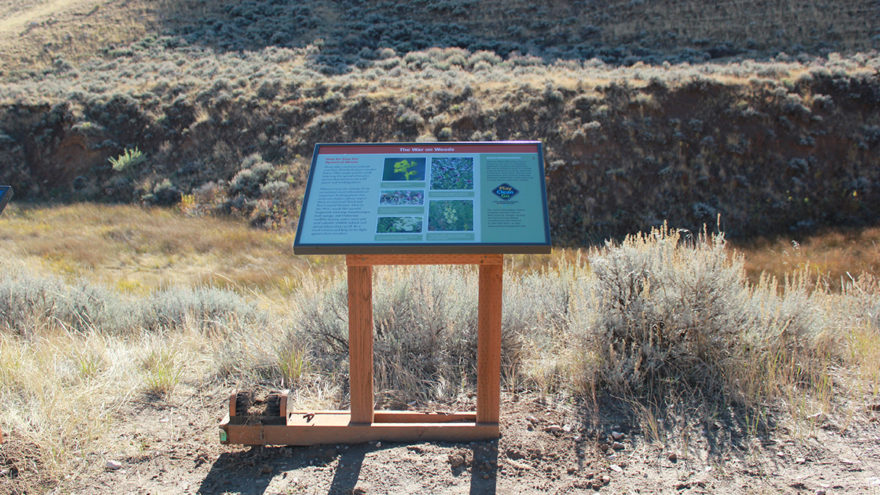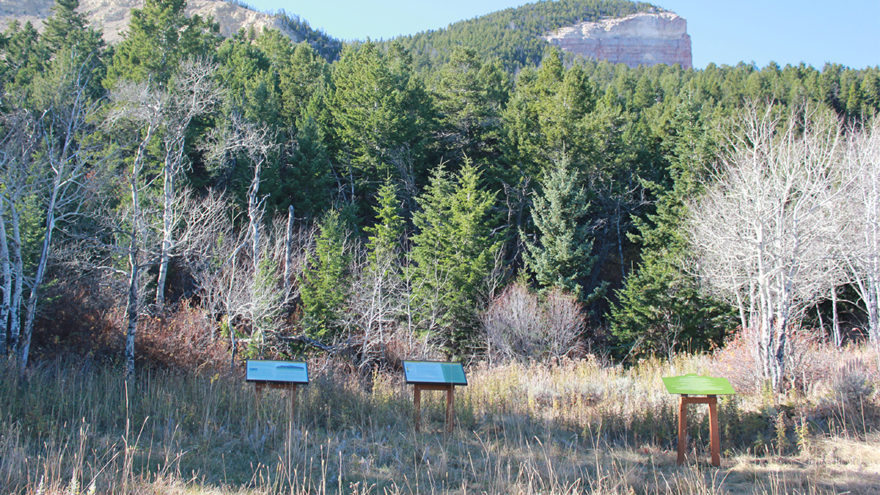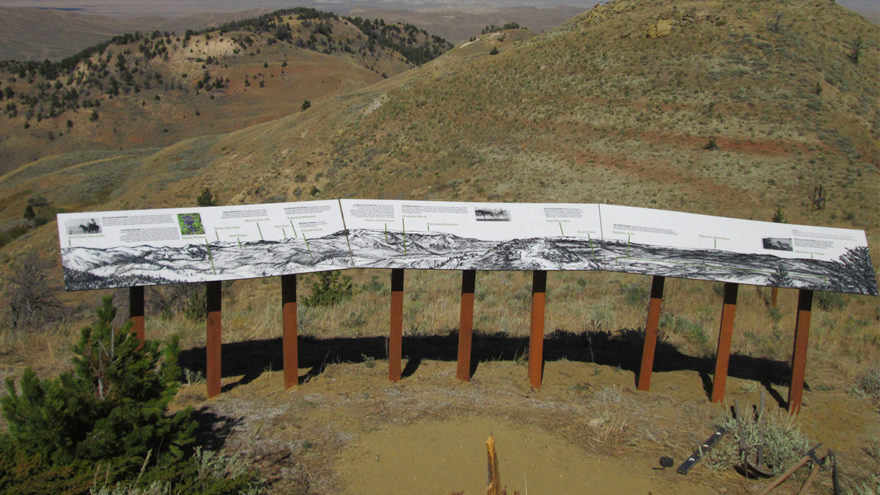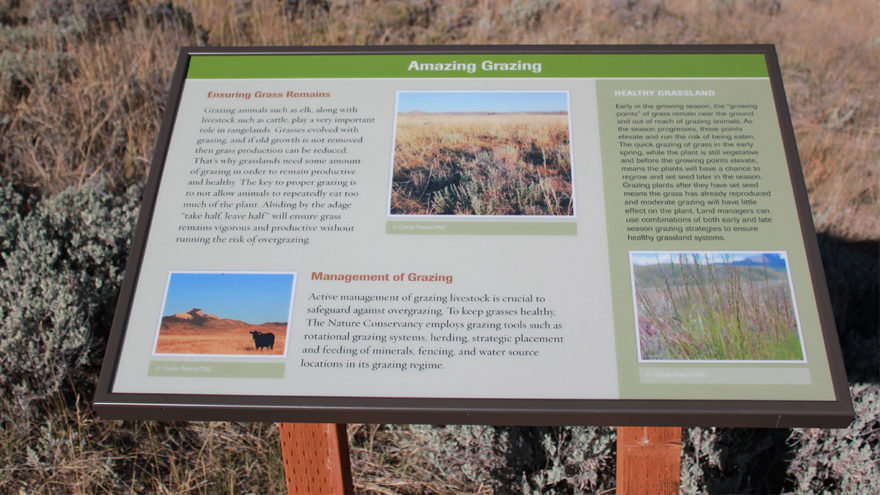In 2015, Environmental Consulting & Technology, Inc. (ECT) began working with Chippewa County to provide green infrastructure improvements for Sherman Park Beach, located along the St. Mary’s River in Sault Sainte Marie, Michigan. The beach had been experiencing periodic closures due to elevated levels of E.coli from storm water runoff.
ECT designed a stormwater “Best Management Practices” for Chippewa County, which included the installation of rain gardens, sidewalk infiltration grates, and native plantings, along with redirecting a storm drain to discharge outside of the jetties, and soil stabilization. In addition, a beach nourishment plan was prepared to raise the profile of the beach, restore the sand dunes and help infiltrate runoff.
As part of the project, ECT’s Senior Administrative Coordinator Chris O’Meara designed seven interpretive panels to display educational information. O’Meara’s designs were manufactured as Fiberglass Embedded panels. Four were installed into Pannier Traditional T exhibit bases, while one became part of a Triangular Kiosk.

